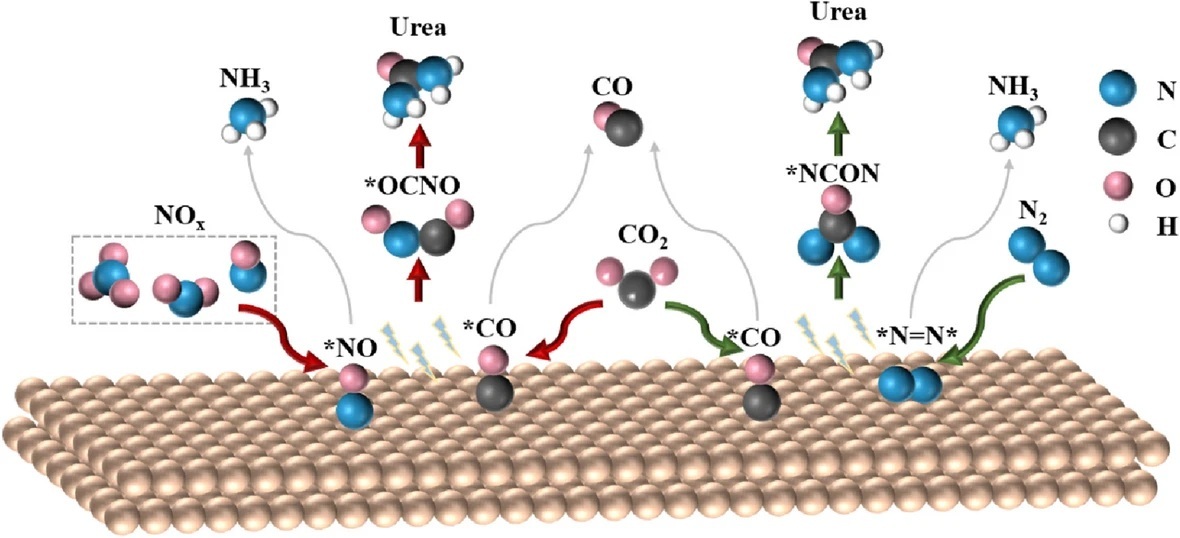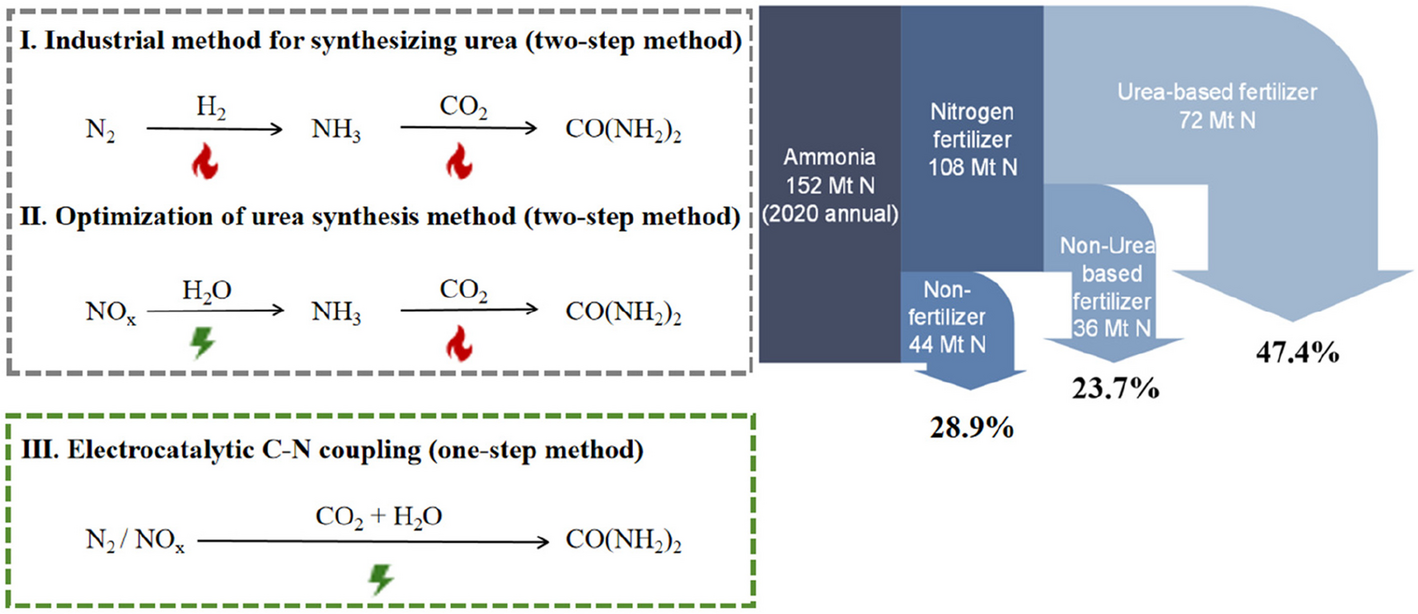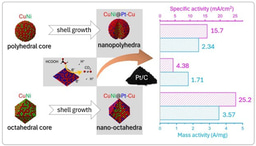From Molecules to Materials: Engineering 2D Catalysts for Efficient Urea Production via C–N Bond Formation

In this review, we present a comprehensive overview of recent advances in the design and surface functionalization of two-dimensional (2D) materials for electrocatalytic carbon–nitrogen (C–N) coupling reactions, with a particular focus on sustainable urea production. Our work aims to address the limitations of the traditional Haber–Bosch process by exploring ambient-condition electrocatalysis using CO₂ and N₂ or NOₓ as feedstocks.
Key Insights
- Sustainable Pathway: Electrocatalytic C–N coupling offers a green route for urea synthesis under ambient conditions.
- 2D Material Platforms: Materials like MoS₂, MXenes, and MOFs provide tunable catalytic properties.
- Surface Functionalization Strategies: Includes heteroatom doping, defect engineering, and molecular functionalization.
- Catalyst Innovations: Single-atom and dual-atom catalysts enhance activation and selectivity.
- Challenges & Future Directions: Addressing low N₂ solubility and complex pathways through reactor and catalyst design.
Significance of the Work
This review underscores the critical role of surface-functionalized 2D materials in advancing electrocatalytic urea synthesis. By integrating theoretical insights with experimental progress, we provide a framework for designing adaptive catalysts capable of operating under mild conditions. Our analysis of reaction mechanisms, intermediate stabilization, and catalyst–substrate interactions offer valuable guidance for future research and industrial translation in the field of green nitrogen–carbon coupling.
Authors & Institutions
- Yue Shang, Dawei Chen, Chen Chen, Shuangyin Wang
State Key Laboratory of Chemo and Biosensing, College of Chemistry and Chemical Engineering, Advanced Catalytic Engineering Research Center of the Ministry of Education, Hunan University, Changsha, China
- Yue Shang, Dawei Chen
College of Material Science and Engineering, Qingdao University of Science and Technology, Qingdao, China
Corresponding Authors & Emails:
- Dawei Chen – dawechen@qust.edu.cn
- Chen Chen – chenc@hnu.edu.cn
- Shuangyin Wang – shuangyinwang@hnu.edu.cn
Follow the Topic
-
Catal

Catal is an open access journal covering full spectrum of catalysis critical advances. From biocatalysts to heterogeneous catalysts, it integrates fundamental and applied sciences. Catal offers a primary platform for researchers and practitioners in the field.
Related Collections
With Collections, you can get published faster and increase your visibility.
Bio-Catalysis in Circular Bioeconomy and Green Chemistry
This collection emphasizes the role of bio-catalysis in advancing the circular bioeconomy, focusing on enzymatic transformations and eco-friendly processes that valorize renewable feedstocks. Contributions should highlight innovative applications of bio-catalysis in waste-to-value systems, biorefineries, and green chemical synthesis.
Catal invites research articles, reviews and reports on the topic of the development of enzymes, metabolic engineering, and integration of bio-catalysis into industrial processes, aiming to reduce dependency on fossil-based resources and promote sustainable practices.
Publishing Model: Open Access
Deadline: Dec 31, 2025
Nanocatalysis and Thermocatalysis in Precision Chemical Synthesis
This collection, hosted by Catal, highlights the intersection of nanocatalysis and thermocatalysis in precision chemical synthesis. It aims to disseminate cutting-edge research that drives innovation in catalytic materials, selective processes, and reaction pathways, fostering advancements in the production of fine chemicals and specialty compounds. Aligned with Catal's mission to prioritize impactful catalytic applications, this collection welcomes contributions from established and early-career researchers that advance both theoretical and applied catalysis.
The collection embraces the breadth of Catal’s coverage, including topics such as nanostructured catalysts, thermocatalytic processes, and advanced synthesis strategies. Contributions may explore catalytic mechanisms, computational modeling, or experimental breakthroughs, offering insights into scalable industrial applications and fundamental research. Articles types—original research, reviews, perspectives, and analyses—are all encouraged, ensuring a diverse platform for sharing high-impact advancements in catalysis.
Publishing Model: Open Access
Deadline: Dec 31, 2025






Please sign in or register for FREE
If you are a registered user on Research Communities by Springer Nature, please sign in